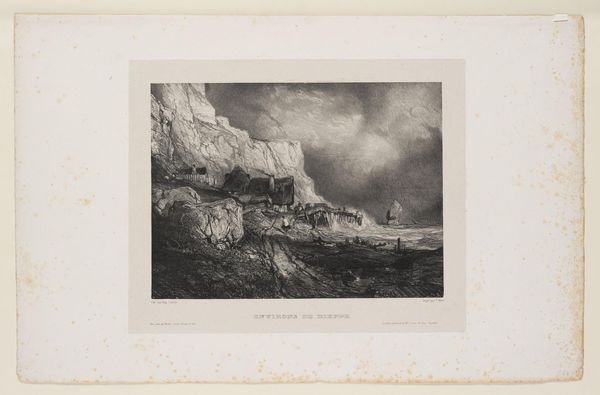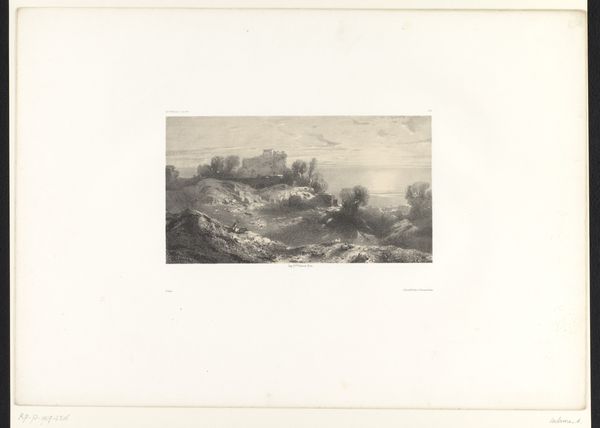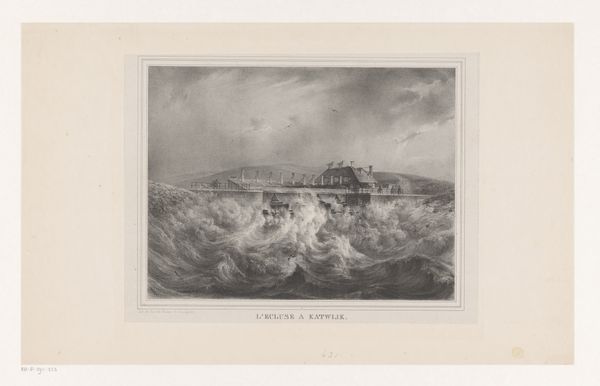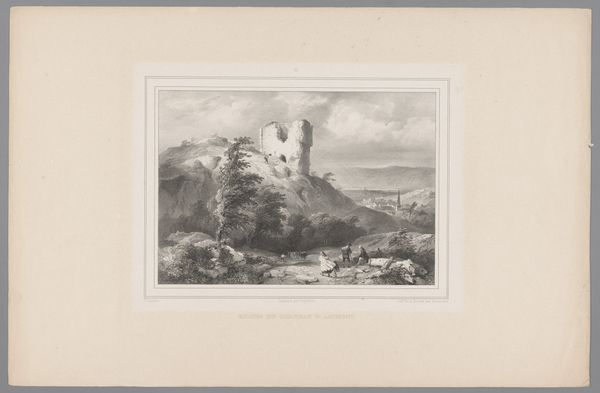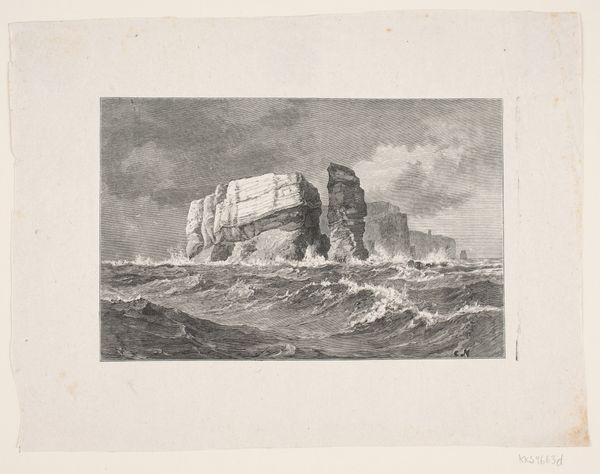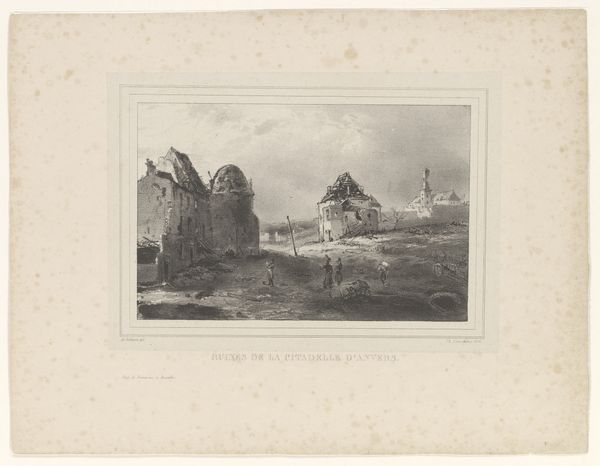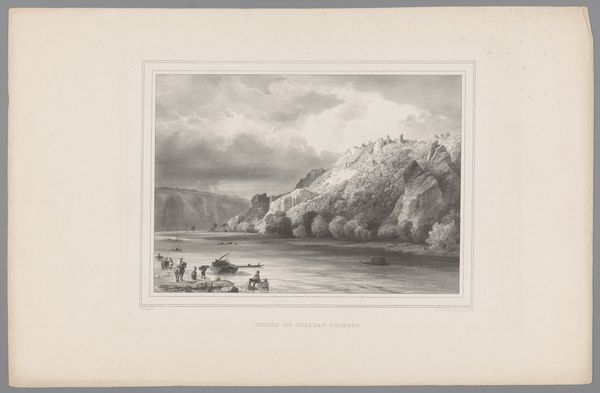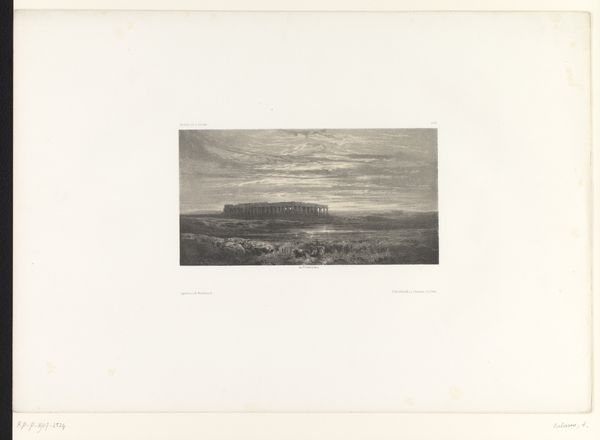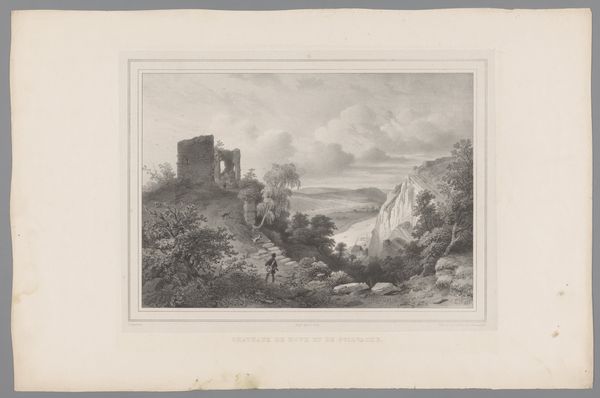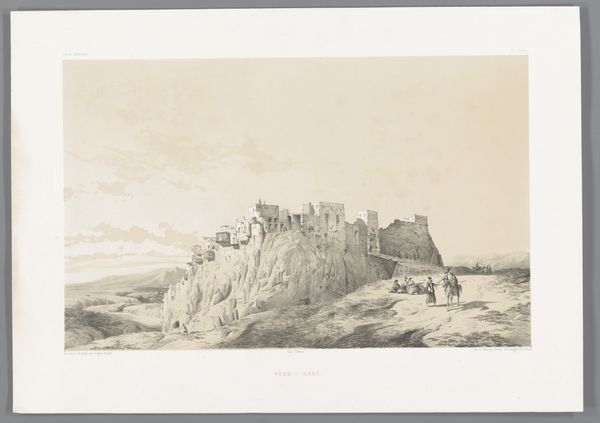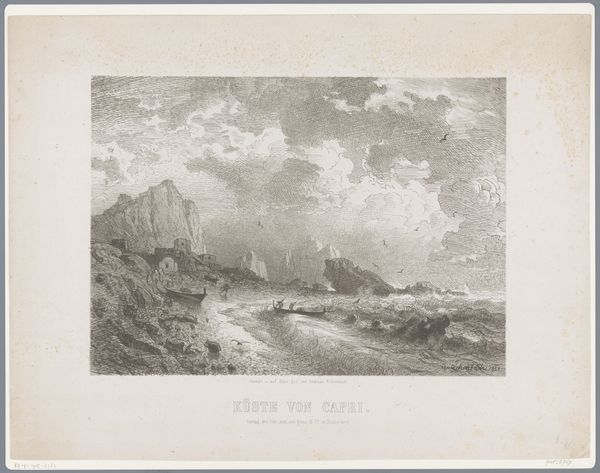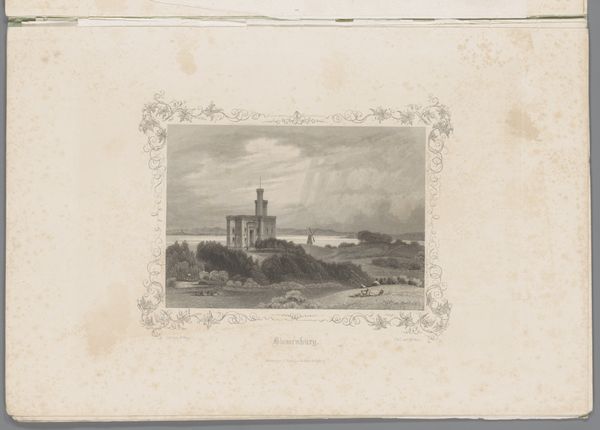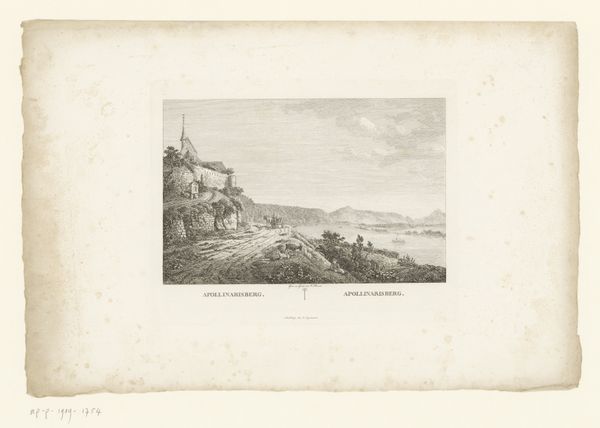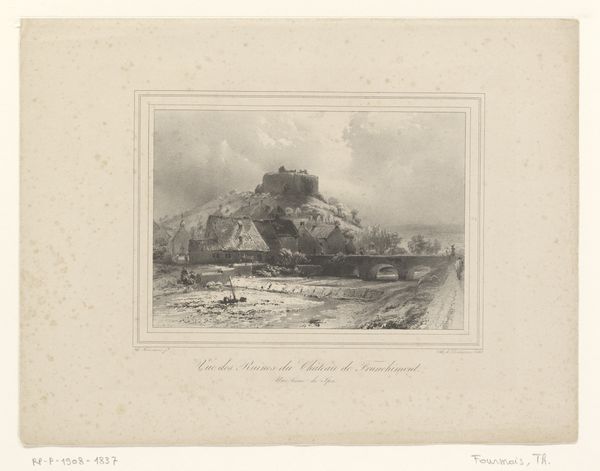
print, engraving
#
photo of handprinted image
#
aged paper
#
photo restoration
# print
#
old engraving style
#
landscape
#
romanticism
#
history-painting
#
engraving
#
monochrome
Dimensions: height 245 mm, width 318 mm
Copyright: Rijks Museum: Open Domain
Editor: This engraving, titled "Doorbraak bij de Citadel van Antwerpen, 1832," created in 1833 by Théodore Fourmois, depicts a historical scene. The monochrome palette gives it a somber, documentary feel. What's striking to me is the contrast between the detailed foreground, filled with figures, and the smoky, less defined citadel in the background. What stands out to you about this piece? Curator: What I find particularly compelling is how this print participates in constructing a specific narrative around Belgian identity and nationalism. Think about it: prints like these, widely distributed, shaped public memory of this conflict. Do you notice how the artist has positioned the figures, almost as if enacting a play on a public stage? Editor: Yes, they are certainly posed, some are clearly injured, but the entire event has a very staged feel. Curator: Precisely! The 'historical accuracy' isn't necessarily the primary concern here. The artist aimed to create a heroic, Romantic vision, using this 'breakthrough' to solidify a sense of Belgian valor against foreign powers. Note how the printmaking technique itself--the reproducibility-- democratizes the image and disseminates that message on a large scale. Who is invited to "take part" by witnessing this image? Editor: So it is not just a record of history, but also actively involved in making history, by influencing public opinion? Curator: Absolutely. It also helps solidify the place of history paintings within the national consciousness, influencing patronage and artistic training. This engraving participates in constructing a visual language that ties conflict and national identity together. Editor: I see how understanding its cultural context is vital to interpreting its meaning. I never would have considered its political implications at face value. Thank you. Curator: My pleasure. Examining art this way unveils so much about how societies represent and understand themselves. It prompts us to reflect critically about the role that art plays in visualizing, interpreting, and, perhaps, shaping national histories.
Comments
No comments
Be the first to comment and join the conversation on the ultimate creative platform.
